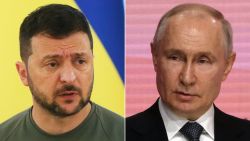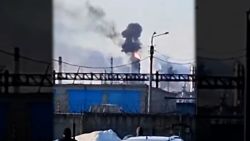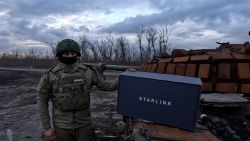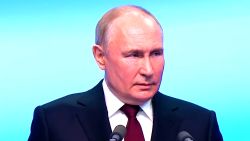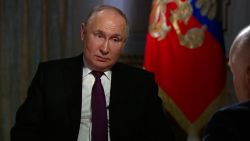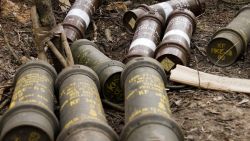Russia’s military says it has moved on to a new phase of its so-called “special military operation” in Ukraine, claiming that it is shifting its focus to the Donbas region in Ukraine’s east.
Is this regrouping of forces a feint – allowing battered Russian forces to regroup after suffering serious losses at the hands of Ukrainian defenders – or a simple face-saving measure? Is Russia actually moving troops and equipment to concentrate on Ukraine’s east, where Moscow has recognized two separatist republics?
On paper, that seems to be the case. Russian Ministry of Defense spokesperson Maj. Gen. Igor Konashenkov said a “planned regrouping of troops” was underway around Kyiv and Chernihiv, one day after Russian negotiators said Moscow’s forces would take steps toward de-escalation around those two cities. He said Russian forces were regrouping in order to “intensify operations in priority areas and, above all, to complete the operation for the complete liberation of Donbas.”
US officials and military analysts have rightly been skeptical of Russia’s claims of de-escalation, and some observers have suggested Russia’s shifting military objectives are meant to conceal massive setbacks on the battlefield. But there is evidence that Russian military activity is ramping up in the east: Ukrainian officials on Thursday reported heavy shelling of a number of Ukrainian cities, particularly in the Luhansk and Donetsk regions of the Donbas and around the northeastern city of Kharkiv.
Escalating attacks in eastern Ukraine
In a statement on Telegram, Oleh Synyehubov, the head of the Kharkiv region military administration, said: “Over the past day, Russian troops have struck 47 times with artillery, mortar, tank, and strikes in the areas of Piatihatky, Oleksiyivka, and the residential area of the Kharkiv Traсtor Plant district. About 380 shellings from Grad and Smerch [rocket artillery] were recorded. In Saltivka, the enemy damaged the gas pipeline, there was a major fire, and rescuers have worked to localize it.”
Synyehubov said Russian forces had inflicted heavy fire on Derhachi, northwest of the city of Kharkiv, killing one person and injuring three others, and destroying a city council building.
“The fiercest point [in Kharkiv region] remains Izium, where fighting and constant shelling continue,” he said. “We are working every day to open ‘green’ [humanitarian] corridors. But so far Russia does not give us such an opportunity.”
Ukrainian military governors in the Luhansk and Donetsk regions also reported heavy shelling Thursday amid an apparent shift by the Russian military to redirect military efforts to the Donbas region.
“We clearly feel that the transfer of [military] technology in our direction is beginning now,” said Serhiy Haidai, Head of Luhansk region military administration, in televised remarks. “And as the equipment and personnel are being turned over, our enemies are simply firing more densely, powerfully. Everything is already involved here: aircraft, artillery, heavy-caliber weapons, mortars — all settlements are being shelled.”

Pavlo Kyrylenko, Head of Donetsk region military administration, said on Telegram that Russian forces overnight continued shelling in the central part of the region.
“In Maryinka, Krasnohorivka and Novomykhailivka, the enemy again used white phosphorous shells,” he said, referring to munitions that are either banned or circumscribed under international law in populated areas. “Eleven wounded civilians from the Maryinka community, including 4 children, were taken to the Kurakhiv City Hospital.”
Kremlin spokesperson Dmitry Peskov said Russia never violates international conventions when asked to comment on a claim by Ukrainian President Volodymyr Zelensky regarding the alleged use of phosphorus bombs by Russian forces, Russian media reported.
Questions about Russian troop morale
Ukraine’s General Staff said in a statement Thursday that Russian forces may indeed be regrouping on the territory of Belarus, which has been a staging area for the Russian invasion of Ukraine.
The statement said the movement of Russian military equipment had been observed in Belarus, “probably for regrouping units, as well as creating a reserve to replenish losses in manpower, weapons and equipment of groups operating in Ukraine.”
Outside analysis suggests that Russian troops have seen serious equipment losses and heavy casualties. The Russian military said nearly a week ago that 1,351 military personnel had been killed in Ukraine and 3,825 had been wounded, casualty figures that the US, Ukraine and NATO say represent a serious underreporting of troop losses.
Jeremy Fleming, Director of Government Communications Headquarters (GCHQ), the UK spy agency speaking during a trip to Canberra, Australia, suggested that Russian troop morale was seriously plummeting and that Russian President Vladimir Putin – who lives in an information bubble as well as in physical isolation – may not be aware of the extent of the problem for his military.
“We’ve seen Russian soldiers – short of weapons and morale – refusing to carry out orders, sabotaging their own equipment and even accidentally shooting down their own aircraft. And even though we believe Putin’s advisers are afraid to tell him the truth, what’s going on and the extent of these misjudgments must be crystal clear to the regime.”
Putin on Thursday signed a decree to draft 134,500 Russians into the military to replace conscripts who are rotating out of service.
The Russian military has a mixed manpower system that has draftees as well as contract servicemembers, and the country has a twice-annual call-up for conscription.
Putin originally claimed that conscripts would not take part in the war, but the Russian defense ministry subsequently acknowledged that draftees were fighting in Ukraine – and Ukrainian forces claim to have taken a considerable number of Russian conscripts prisoner.
An intensifying humanitarian crisis
The humanitarian situation remains grave in many Ukrainian cities, particularly in the besieged southeastern port city of Mariupol.
On Thursday, hopes were raised of the possibility that busloads of residents of Mariupol – which has been under weeks of relentless shelling and bombing by Russian forces – might be able to leave through a so-called humanitarian corridor.
But the convoy was held up at a Russian checkpoint in Vasylivka, a city between the Ukrainian-held city of Zaporizhzhia and the Russian-held city of Berdiansk, according to Iryna Vereshchuk, the Ukrainian minister for Reintegration of Temporarily Occupied Territories.
Vereshchuk said about 100,000 people requiring immediate evacuation remain in the city, out of a pre-war population of over 400,000.
“That is, another 100,000 women, children, the elderly, and people with disabilities who need our and the world’s help,” she said.
Ukrainian officials say around 90% of the buildings in the city have been damaged or left uninhabitable after weeks of bombardment.






